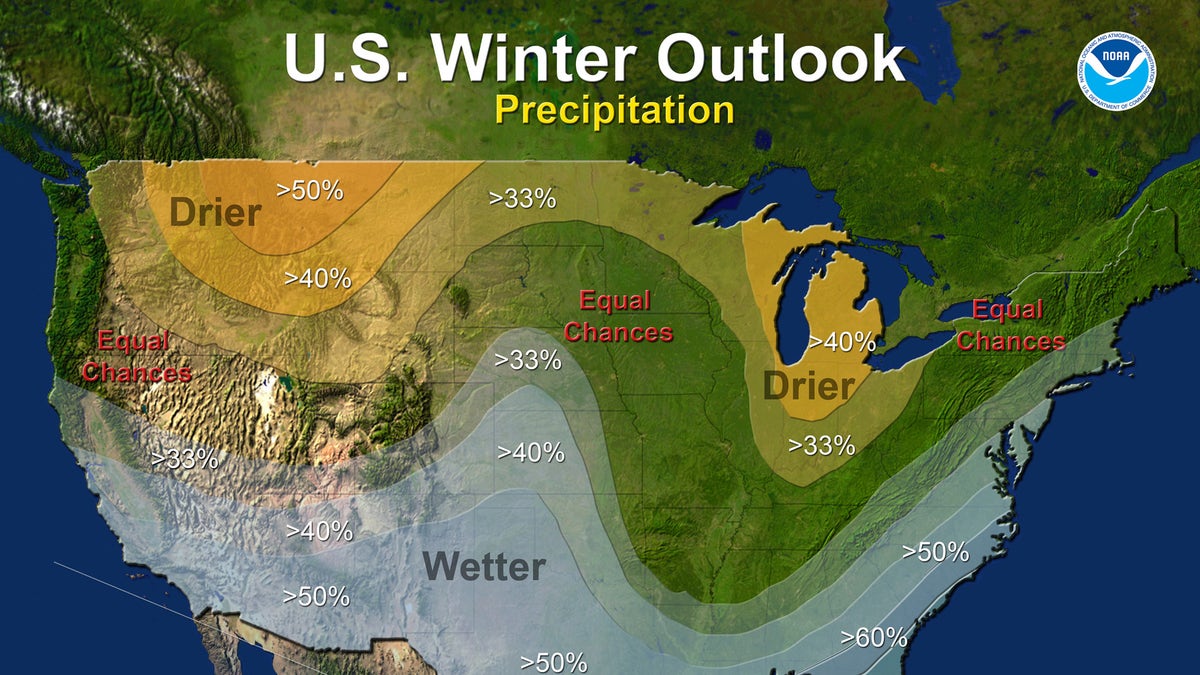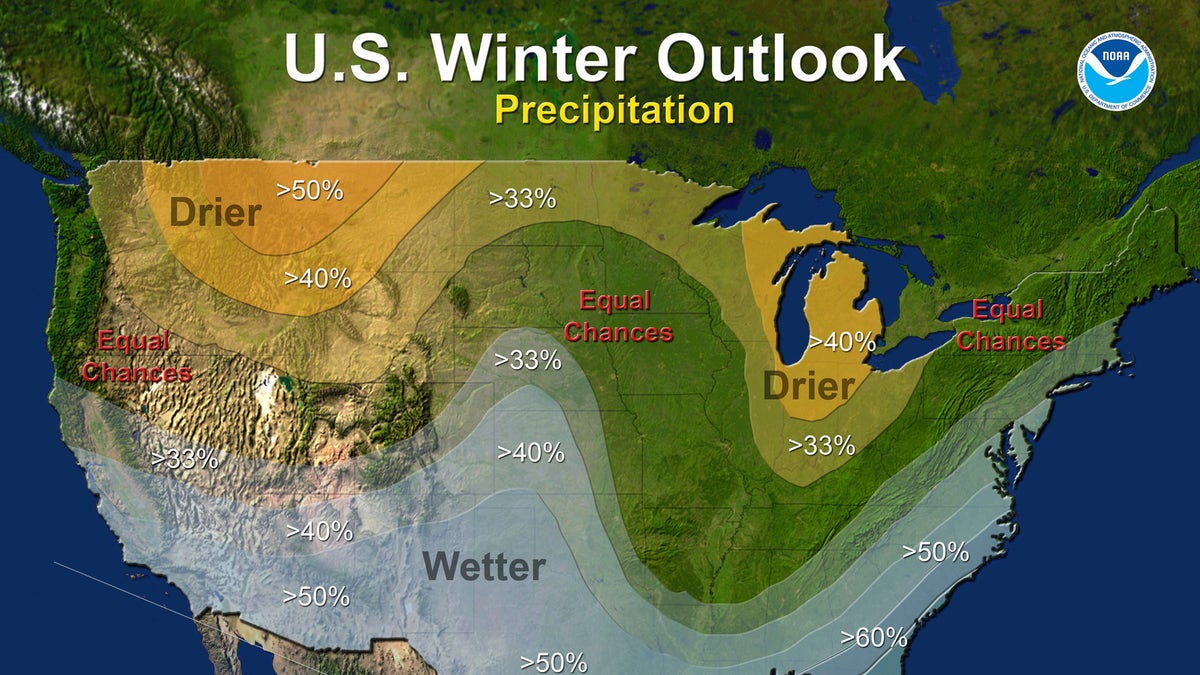
Roofer Joel Camberos with Hull Brothers Roofing & Waterproofing resurface townhomes roofs at the Marina del Rey seaside community of Los Angeles on Tuesday, Aug. 25, 2015. Roofers are reveling in the uptick in business as homeowners ready for the prospect of downpours after four years of dry weather. (AP Photo/Damian Dovarganes) (The Associated Press)
One of the strongest ever El Ninos is likely to significantly influence this winter’s weather, which should see warmer-than-average temperatures in the West and cooler and wetter conditions in the South.
In its winter outlook, the National Oceanic and Atmospheric Administration (NOAA) also said temperatures should be above average in the northern half of the contiguous U.S., Alaska and much of Hawaii. Below-average temperatures, meanwhile, are most likely in the southern Plains and Southeast.
Related: Forecasters warn this winter's El Nino could be historically strong
Typically, the Arctic Oscillation, which influences the number of arctic air masses that penetrate into the South and nor’easters on the East Coast, and the Madden-Julian Oscillation, which shapes the number of heavy rain storms in the Pacific Northwest, play a big role in winter weather.

This year, El Nino is expected to be the star. El Niño - meaning in Spanish "the little boy, or Christ child" - is created when the equatorial waters of the Pacific Ocean warm significantly.
The map on the right shows the temperature forecast from NOAA's U.S. Winter Outlook: 2015-2016 (Credit: NOAA)
“A strong El Niño is in place and should exert a strong influence over our weather this winter,” Mike Halpert, deputy director of NOAA’s Climate Prediction Center, said in a statement. “While temperature and precipitation impacts associated with El Niño are favored, El Niño is not the only player. Cold-air outbreaks and snow storms will likely occur at times this winter.”
Forecasters are predicting with 95 percent confidence that this El Nino will last through the winter and be the third strongest since the 1997-98 El Nino and possibly the third strongest since 1950. The 1997-98 event sparked widespread storms and flooding that caused more than $4 billion in damage and killed 189 people nationwide.
At the same time, the outlook offers some good news for Californians who are in the grip a historic drought that is now in its fourth year and led the state to impose draconian water restrictions. The lack of rainfall has led to “exceptional drought” in half the state and “some degree of drought” over the entire state, Halpert told reporters during a press conference Thursday.
NOAA’s drought outlook is predicting some improvement in central and southern California by the end of January with further relief statewide during February and March, Halpert said.

The map on the right shows the precipitation forecast for the U.S. Winter Outlook: 2015-2016 (Credit: NOAA)
Drought conditions are also expected to ease across large parts of the Southwest and the southern Plains, he said. But drought is expected to persist in the Pacific Northwest and northern Rockies and emerge in Hawaii, parts of the northern Plains and in the northern Great Lakes region.
“Although the Winter Outlook is good news for California, a wet winter is not guaranteed and even a wetter-than-average winter is unlikely to erase four years of drought,” Halpert said.




















